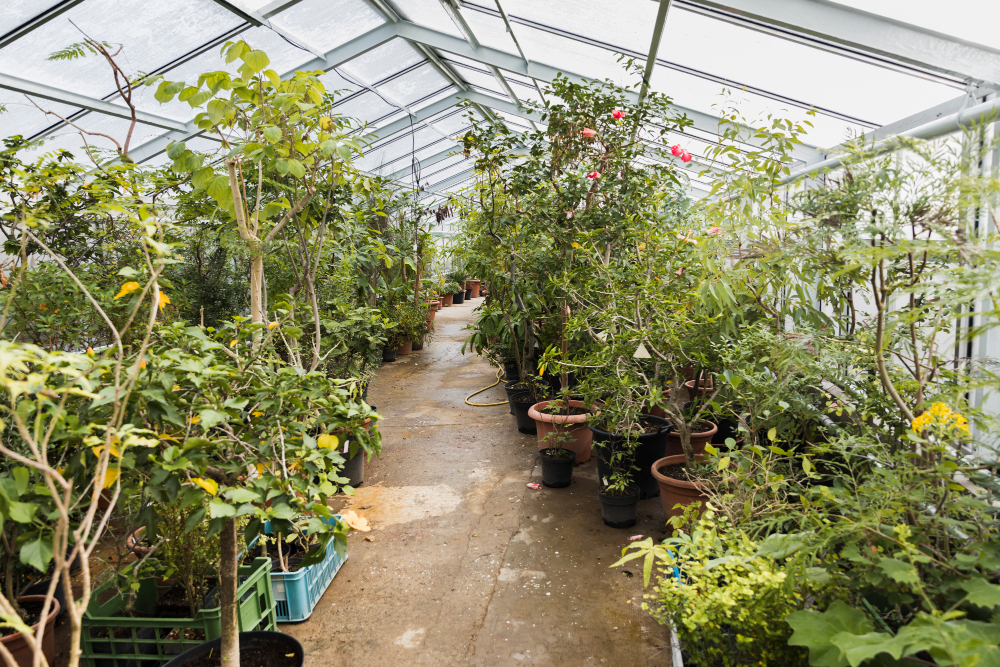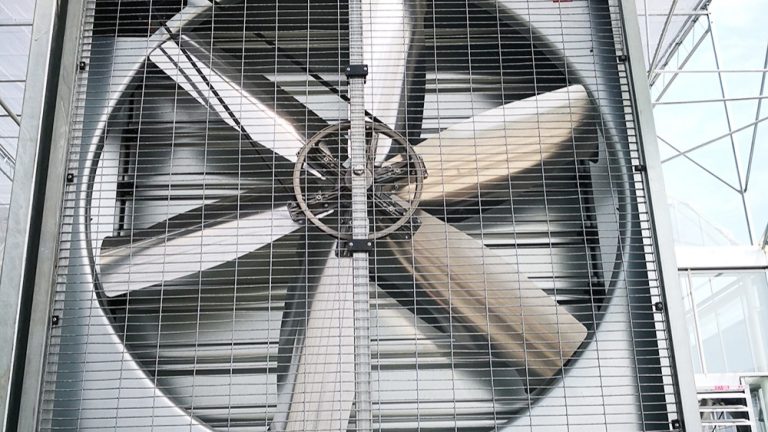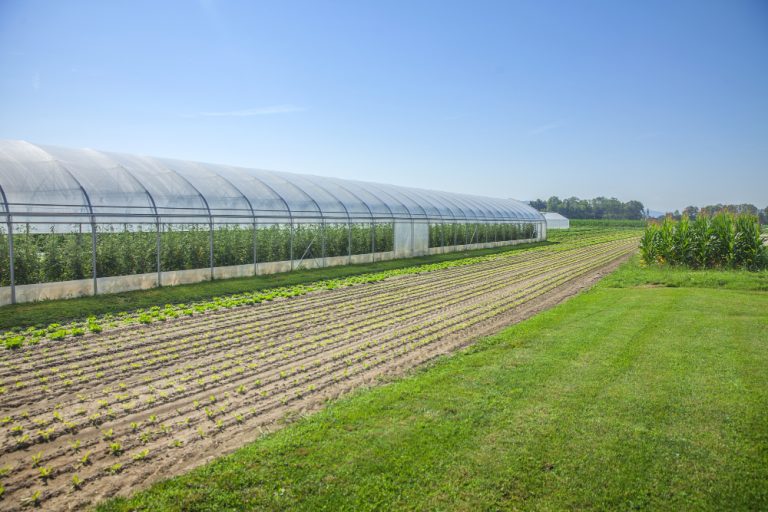
Key Points
- A greenhouse typically has a framed structure, transparent covering, and ventilation system.
- Research suggests these features are essential for creating a controlled environment for plant growth.
- The evidence leans toward including optional features like heating and irrigation, depending on climate and needs.
Framed Structure and Covering
A greenhouse is built with a sturdy frame, often made of metal or wood, which supports the structure. The walls and roof are made of transparent or translucent materials like glass, polycarbonate, or plastic film. This allows sunlight to enter for photosynthesis and traps heat inside, creating a warmer environment for plants.
Ventilation System
Ventilation, through windows, vents, or fans, is crucial to regulate temperature and humidity, preventing overheating and ensuring fresh air circulation for healthy plant growth.
Additional Features
Some greenhouses may include heating systems for colder climates and irrigation systems for watering, but these are not always considered basic and depend on specific needs.
Survey Note: Detailed Analysis of Greenhouse Features
This section provides a comprehensive exploration of the basic features of a greenhouse, expanding on the key points to offer a detailed understanding for enthusiasts and professionals alike. Greenhouses are structures designed to create controlled environments for plant cultivation, and their features are tailored to optimize growth by managing light, temperature, humidity, and protection. Below, we delve into the structural, functional, and operational aspects, supported by various sources and insights.
Structural Components
The foundation of a greenhouse is its framed structure, which provides stability and support. This frame is typically constructed from materials such as aluminum, galvanized steel, or wood (e.g., redwood, cedar, or cypress), chosen for durability and resistance to weather conditions. For instance, Greenhouse Structures – Ornamental Production highlights rafters, end walls, side posts, and purlins as key structural components, spaced 2–8 feet apart depending on size and strength requirements. These elements ensure the greenhouse can withstand wind, snow, and other environmental stresses, with reinforced truss constructions recommended for wider spans (over 50 feet).
The covering material, often referred to as glazing, is another critical feature. It must be transparent or translucent to allow sunlight to penetrate for photosynthesis while trapping heat to maintain warmth. Common materials include glass, polycarbonate, polyethylene plastic film, and fiberglass, as noted in Greenhouse | Definition, Types, & Uses | Britannica. The choice of material affects durability, insulation, and light transmission, with glass being traditional but plastics offering cost-effective alternatives. For example, How Greenhouses Work: The Science Behind It – ClimaPod Greenhouses by Vida explains how these materials harness thermal radiation, converting sunlight into heat to create a stable climate for plants.
Environmental Control Systems
Ventilation is a fundamental feature for regulating the internal environment, preventing issues like overheating and pathogen buildup. It is achieved through windows, vents, or fans, which can be manually operated or automated with electronic controllers, as mentioned in Greenhouse – Wikipedia. Ventilation ensures fresh air circulation, essential for photosynthesis and respiration, and helps manage humidity to avoid plant diseases. For instance, The Hobby Greenhouse | Oklahoma State University emphasizes its role in temperature control, particularly in lean-to designs where space and light may be limited.
Heating and cooling systems are also significant, though not always considered basic, depending on the climate. In colder regions, heating methods like natural gas furnaces, electric heaters, or passive solar heating are used, with costs noted as a major factor due to heat loss through transparent coverings (R-value ~2), as per Greenhouse – Wikipedia. Cooling, on the other hand, can be achieved by opening windows or using shade cloths in hot conditions, as discussed in Benefits of a Greenhouse – By Jean Vernon – Hartley Botanic. These systems stabilize the growing environment, protecting plants from extreme temperatures.
Operational Features
Irrigation systems are essential for providing water to plants, which can be manual or automated, such as drip irrigation or misters, as outlined in Greenhouse Growing Basics: Essential Greenhouse Supplies & Materials – Farmer Boy. While not part of the structure itself, they are crucial for plant health and are often integrated into greenhouse design. Flooring and drainage are also important, with options like gravel, concrete, or soil ensuring proper water management, as noted in the initial analysis. This supports plant health by preventing water buildup and maintaining a manageable environment.
Benches or shelving are common features to maximize space and improve airflow, particularly for potted plants or seedlings. These raised platforms, as mentioned in The Hobby Greenhouse | Oklahoma State University, make plant care easier and are especially useful in smaller greenhouses. Environmental controls, such as thermostats and hygrometers, allow for monitoring and adjusting temperature, humidity, and light levels, enhancing precision in plant cultivation, as seen in 9 Types of Greenhouses | The Family Handyman.
Protection and Additional Considerations
Greenhouses offer protection from pests, harsh weather (e.g., frost, wind, heavy rain), and seasonal changes, extending the growing season. This protective role is highlighted in What Is a Greenhouse? | Wayfair, which notes their use for growing plants that require special conditions. The design can vary, with types like lean-to, freestanding, or connected (sawtooth) structures, each with advantages and disadvantages, as discussed in Lesson 13: Greenhouse Structures (Printer Friendly Format). For example, lean-to greenhouses are cost-effective but may have limited ventilation and light, while freestanding designs offer more flexibility.
Global Context and Adoption
Globally, greenhouses cover an estimated 9 million acres (36,500 km²), with significant adoption in regions like the Netherlands, where 5,000 hectares were in use in 2017, contributing €7.2 billion to the economy, as per Greenhouse – Wikipedia. Chinese solar greenhouses, originating in 1978, feature three solid walls and a transparent south-facing side, achieving internal temperatures 25°C (45°F) warmer, using modern insulation and automated night curtains, as noted in the same source. These variations illustrate how basic features can be adapted to local climates and needs.
Comparative Analysis of Features
To organize the information, here is a table summarizing the basic and additional features, based on various sources:
| Feature Category | Basic Features | Additional Features |
|---|---|---|
| Structure | Framed structure (rafters, posts, purlins) | Foundation type (concrete, wood, etc.) |
| Covering | Transparent/translucent (glass, plastic, etc.) | Specific material (e.g., 3 mm horticultural glass) |
| Environmental Control | Ventilation system (vents, fans) | Heating (furnaces, solar), cooling (shade cloths) |
| Water Management | – | Irrigation systems (drip, misters) |
| Interior Layout | – | Benches, shelving for plant organization |
| Monitoring | – | Environmental controls (thermostats, hygrometers) |
| Protection | – | Pest screens, weather protection |
This table highlights that while the framed structure, covering, and ventilation are fundamental, other features enhance functionality but are not always considered basic.
Conclusion
In summary, the basic features of a greenhouse include a framed structure, transparent or translucent covering, and a ventilation system, which together create a controlled environment for plant growth. Additional features like heating, irrigation, and shelving are common and essential for optimizing conditions, particularly in varying climates. This analysis draws from multiple sources, ensuring a comprehensive understanding for both hobbyists and commercial growers, as seen in resources like Greenhouse Structures and Coverings | Oklahoma State University and Hobby Greenhouse FAQ’s | What to Know Before You Buy | joe gardener®.




